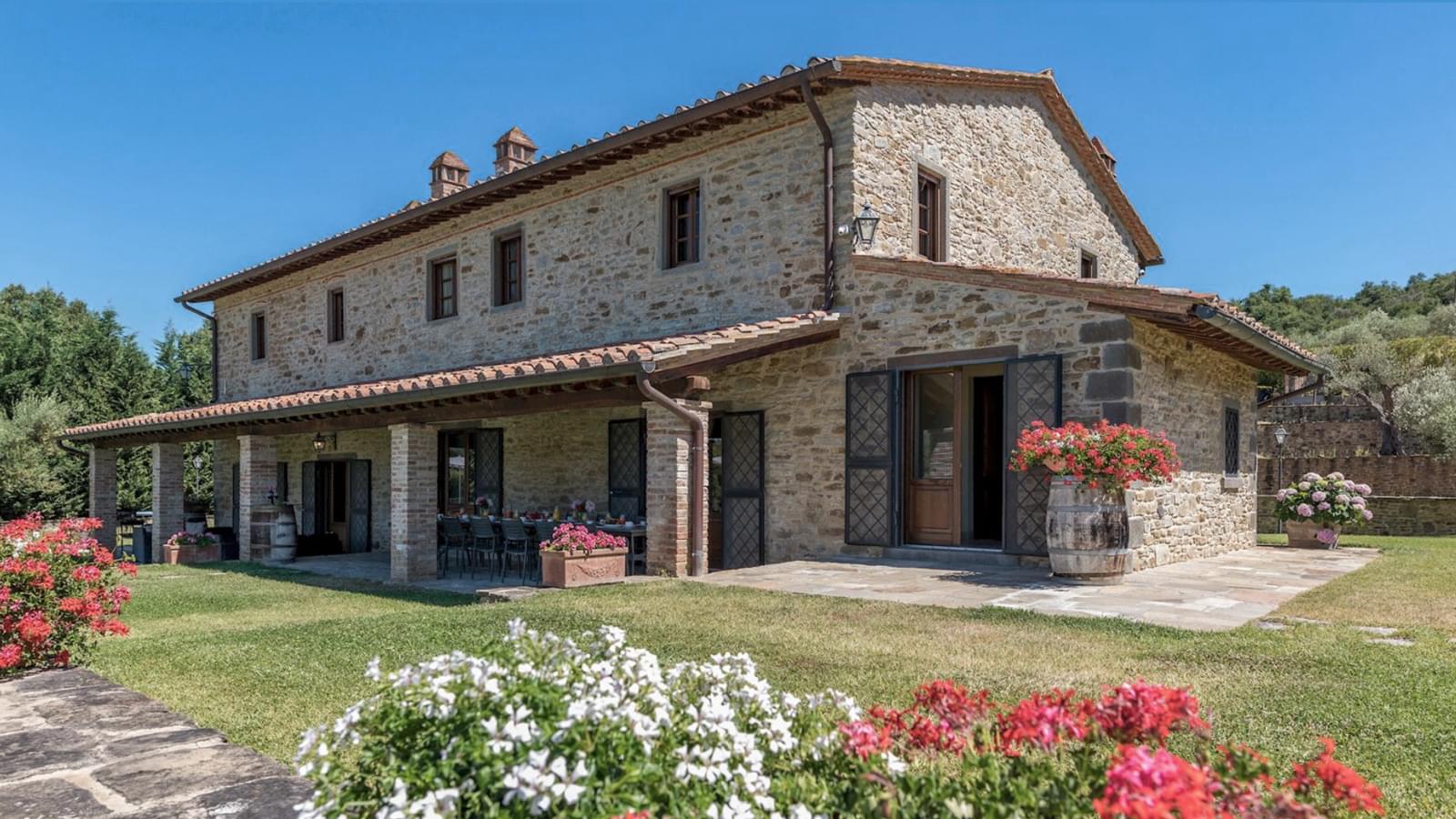Crete Vacation Rentals
Explore 942 rental homes and villas in Crete for your next vacation or business travel. With private vacation home rentals, enjoy a more personalized stay and a wide range of amenities such as Homes with Pools, Air Condition Homes and Best Affordable Homes. With a wide range of homes to offer, pricing can start as low as $30 per night with homes containing as many as 16 bedrooms and 16 bathrooms. However you're looking to experience your stay, Homes and Villas by Marriott has your next vacation home waiting.
Types of vacation rentals in Crete
Where to stay in Crete
Booking a vacation rental in Crete?
Here are some things to know to support your visit:
Crete Overview
Immerse yourself in the enchanting allure of Crete, a gem in the heart of the Aegean Sea, where the whispers of ancient civilizations blend seamlessly with the serenity of Mediterranean landscapes. This majestic Greek island beckons with its tapestry of golden beaches, dramatic mountains, and verdant expanses of vineyards and olive orchards.
At the heart of Crete's historical tapestry lies the Palace of Knossos, a labyrinthine complex that fuels the imagination with tales of Minotaur legends and is often celebrated as the cradle of European civilization. The island's rich past is further showcased in the world-class archaeological museums of Heraklion and Chania, where treasures of bygone eras are displayed with pride.
To truly savor the essence of Cretan life, consider the unparalleled experience of residing in a private home, a sanctuary where you can bask in the island's tranquil beauty at your leisure. Many of these homes offer the luxury of a swimming pool, inviting you to cool off under the Grecian sun in complete privacy. For those traveling with furry companions, a selection of pet-friendly options ensures that your entire family can enjoy the comforts of home in this idyllic setting.
Crete's coastline is a paradise for beach connoisseurs, with the world-renowned Elafonisi Beach, where pink-hued sands meet the embrace of turquoise waters, and the Balos Lagoon, a natural wonder that captivates with its exotic beauty. These shores are sanctuaries for relaxation, water sports, or simply the joy of watching the sun dip below the horizon.
Venture inland and you'll find the Samaria Gorge, a breathtaking natural wonder that offers an invigorating trek through one of Europe's most awe-inspiring canyons. The bucolic charm of the Lasithi Plateau, with its iconic windmills and fertile lands, provides a peaceful contrast to the island's coastal vibrancy.
The soul of Crete is best experienced through its people, whose warm hospitality is as inviting as the island's climate. Engage with the local culture through vibrant festivals where the rhythmic pulse of Cretan music and dance celebrates life's simple pleasures.
Crete is not just a destination; it's a mosaic of experiences waiting to be discovered. From the remnants of ancient empires to the tranquil luxury of a private home retreat, this island offers a journey that will enchant the senses and leave an indelible mark on your heart.
Cultural Attractions in Crete
Crete, Greece is a captivating destination for travelers who appreciate arts, history, and local customs. The island's rich history extends back to the Bronze Age and is evident in its numerous archaeological sites. While the Palace of Knossos was indeed a significant center of the Minoan civilization, it's worth noting that there were other important Minoan palace sites on Crete as well, such as Phaistos and Malia.
Art lovers will find much to admire in Crete's many museums and galleries. The Heraklion Archaeological Museum boasts an extensive collection of Minoan art, while the Historical Museum of Crete offers a thorough look at Cretan history from early Christian times to the present day. For those interested in contemporary art, the Olivepress Art Factory in Chania regularly hosts exhibitions featuring both local and international artists.
Live music is deeply ingrained in Cretan culture with traditional music performances being a common sight across the island, especially during summer festivals. Visitors can enjoy concerts featuring the Cretan lyra or join in lively folk dances at village feasts.
Experiencing Crete's local customs is best done through its food scene and traditional events. Cretan cuisine is celebrated for its healthy ingredients and tasty dishes like dakos (a type of bruschetta) or moussaka (a layered eggplant and meat dish). Wine tasting tours are also popular due to Crete's longstanding tradition in winemaking.
The island's annual events provide further opportunities for immersion into local customs. The Rethymno Renaissance Festival showcases Renaissance era music and arts set against the backdrop of Rethymno’s medieval fortress. In Heraklion, summer cultural events feature music concerts, art exhibitions, and theatrical performances.
In summary, Crete presents a unique combination of ancient history, vibrant arts scene, lively music traditions, delectable cuisine and rich local customs, making it a perfect destination for cultural enthusiasts.
Family friendly activities in Crete
Crete, Greece, stands as an excellent choice for family vacations, offering a wide range of activities that cater to children's interests. The island's pristine beaches are ideal for engaging in fun activities such as sandcastle building and swimming in the warm, crystal-clear waters.
The Cretaquarium in Heraklion is a place where children can be amazed by over 2,000 marine species from the Mediterranean Sea and gain knowledge about their habitats through interactive displays.
Another attraction that is sure to captivate children is the Dinosauria Park. This dinosaur-themed park houses life-sized replicas of dinosaurs and provides educational activities that make learning about these ancient creatures enjoyable.
Crete also boasts numerous archaeological sites that offer a unique chance for children to delve into ancient history. The Palace of Knossos stands out among these; it holds the title of Europe's oldest city and is associated with exciting stories of the Minotaur and Labyrinth.
The island's natural splendor also opens up numerous possibilities for outdoor adventures. Families can venture into the Samaria Gorge National Park or embark on a boat journey to witness the caves at Matala.
When it comes to cuisine, Crete presents many options that are suitable for children. Greek food is celebrated for its fresh ingredients and tasty dishes such as souvlaki (grilled meat skewers), moussaka (a layered meat and eggplant dish), and tzatziki (a yogurt-based dip). Additionally, there are ample spots to savor traditional Greek desserts like baklava or loukoumades (honey doughnuts).
In Crete, children can experience a blend of beachside enjoyment, outdoor adventures, historical discovery, and delectable food. It's an island that delivers enriching experiences for kids while ensuring they have an abundance of fun.
Outdoor activities in Crete
Crete, an island in Greece, is a haven for those who appreciate the great outdoors. Its varied terrain provides a plethora of natural marvels and outdoor adventures to discover.
One must-see is the Samaria Gorge, one of the longest gorges in Greece. This 16-kilometer journey will lead you through an awe-inspiring landscape of towering cliffs and lush greenery. At the trail's end, you'll find yourself at the stunning Agia Roumeli beach where you can cool off in the sea.
For water sports enthusiasts, Crete's many beaches provide opportunities for swimming, snorkeling, and diving. Elafonisi Beach is particularly well-liked due to its pinkish hues caused by coral fragments and its turquoise waters. Here you can explore underwater caves and reefs brimming with marine life.
Located in West Crete are The White Mountains or Lefka Ori which offer challenging hiking trails with breathtaking views. These mountains host over 30 peaks above 2,000 meters and are sprinkled with traditional villages where Cretan hospitality can be experienced.
Crete also has several natural parks where visitors can immerse themselves in nature. The Palm Forest of Vai on the east coast of Crete is home to Europe's largest natural palm grove. Here you can walk among thousands of palm trees or unwind on the sandy beach.
Lake Kournas is an ideal spot for bird watchers as it's Crete's only freshwater lake attracting many species of birds as well as turtles and other wildlife.
Lastly, don't miss out on exploring Crete's sea caves by boat or kayak. The Matala Caves are especially famous for their unique formations and historical significance.
In Crete, every turn unveils a new opportunity to connect with nature whether it be hiking through gorges or mountains, exploring underwater worlds or simply relaxing on one of its many beautiful beaches.
Weather in Crete
Crete, Greece is graced with a Mediterranean climate characterized by mild, rainy winters and hot, dry summers. Its position in the southern part of the Aegean Sea results in an extended summer season compared to other regions of Greece.
The summer months from June to August are usually the warmest, with average high temperatures reaching into the upper 80s to low 90s Fahrenheit. These months also experience minimal rainfall and low humidity levels due to the dry Mediterranean summers, making it perfect for beach activities and exploration of ancient ruins.
Winter months from December to February are mild with average high temperatures in the 50s and lows rarely falling below 40 degrees Fahrenheit. Rainfall is more frequent during this period but it's usually not heavy or prolonged. Snowfall is uncommon but can occur in Crete's mountainous regions.
Spring and fall serve as transitional seasons with temperatures ranging from mid-60s to mid-70s. The springtime from March to May is particularly beautiful as wildflowers bloom across the island's landscapes. Fall from September to November offers a break from summer heat while still providing ample sunshine for outdoor exploration.
The most favorable time to visit Crete is during late spring (May) and early fall (September), when weather conditions are most suitable for sightseeing and outdoor activities. These periods offer a balance between warm temperatures and lower tourist crowds compared to peak summer months. However, every season in Crete has its own unique appeal due to its diverse climate.
Transportation in Crete
Crete, Greece's largest island, provides a range of transportation choices for its visitors. The majority of travelers typically land at either Heraklion International Airport or Chania International Airport, both of which have strong connections to major cities in Europe. However, it's worth noting that there are also smaller regional airports such as Sitia Airport that may be convenient depending on your final destination on the island.
For those who prefer sea travel, ferries from Athens and other Greek islands are also an option to reach Crete. While Athens is a common departure point, numerous other Greek islands also offer ferry routes to Crete, providing additional flexibility for your travel plans.
Once you've arrived in Crete, there are several ways to navigate the island. Buses offer an affordable and popular means of transport with extensive services linking major towns and tourist sites across the island. Taxis are also readily available for shorter trips or direct transfers.
Renting a car can provide more flexibility for exploration. While it's true that Crete has an extensive network of roads covering the entire island, it's important to note that road quality and driving conditions can vary significantly across different areas. Particularly in mountainous regions where roads can be winding and local driving habits may pose challenges.
Walking is certainly a viable way to explore Crete's towns and cities like Chania and Rethymno which boast pedestrian-friendly centers. However, given the size of the island, relying solely on walking would not be practical for longer distances.
In summary, whether you're arriving by air or sea and whether you choose to navigate by bus, car or taxi; Crete offers a variety of options tailored to meet every traveler's needs while providing a fair warning about potential challenges such as varying road conditions.











